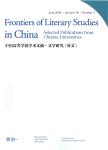Translated Illustration and the Indigenization of Christianity in Late Qing Chinese Christian Novels
Translated Illustration and the Indigenization of Christianity in Late Qing Chinese Christian Novels作者机构:Department of Chinese Language and Literature Sun Yat-sen University Guangzhou 510275China
出 版 物:《Frontiers of Literary Studies in China-Selected Publications from Chinese Universities》 (中国高等学校学术文摘·文学研究(英文版))
年 卷 期:2016年第10卷第2期
页 面:255-286页
学科分类:01[哲学] 0101[哲学-哲学] 05[文学] 010107[哲学-宗教学] 0503[文学-新闻传播学]
基 金:Complete Library of Canton Study of Guangzhou, (2016GZZ04) Humanities and Social Sciences Youth Foundation, Ministry of Education, (14YJC751045)
主 题:translated illustration indigenization of Christianity The Pilgrim'sProgress inter semiotic translation translated Christianity
摘 要:"Intersemiotic translation" is categorized by Roman Jakobson as one of three types of translation. Translation of illustrations in the late Qing novels, either directly from verbal signs or visual signs, can also be regarded as a typical kind of "intersemiotic translation." The present article studies illustrations in Chinese Christian literature in the late Qing period, especially those in the Chinese translations of John Bunyan's works, The Pilgrim's Progress and The Holy War. Questions to ponder are how inter-semiotic translation occurs between these illustrations--in either transferring or transplanting the meanings from one sign system to another--and how it establishes its legitimacy through religious negotiation, ideological conflict, and cultural integration. The illustrations in the Chinese translation versions of The Pilgrim "s Progress manifest the translators' and illustrators' manipulation of repertoires of Chinese religious signs, thereby indigenizing a foreign religion. These illustrations, nevertheless, are not only associated with Christianity, but also with the long-lasting visual signs of Chinese culture. Hence these translated illustrations could be considered as a type of "Translated Christianity."



